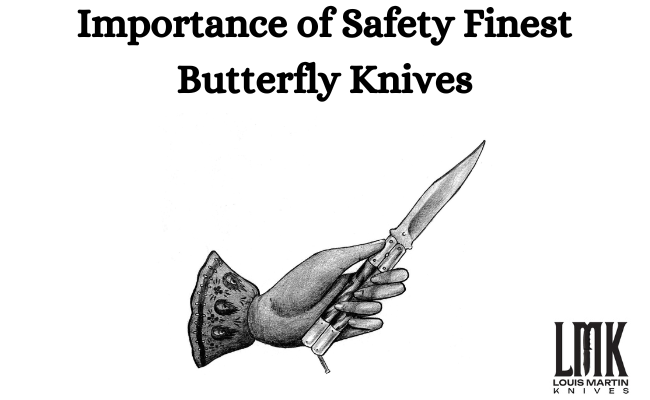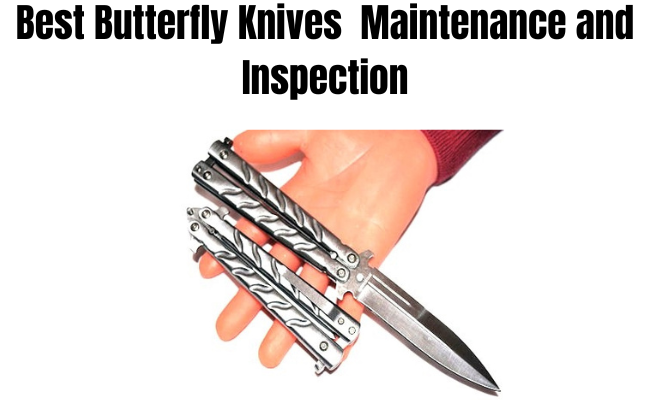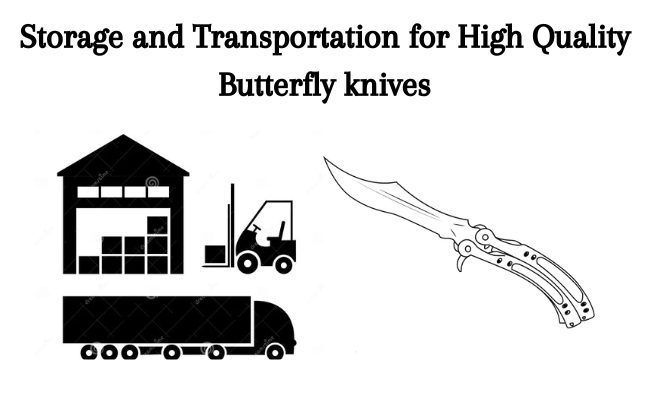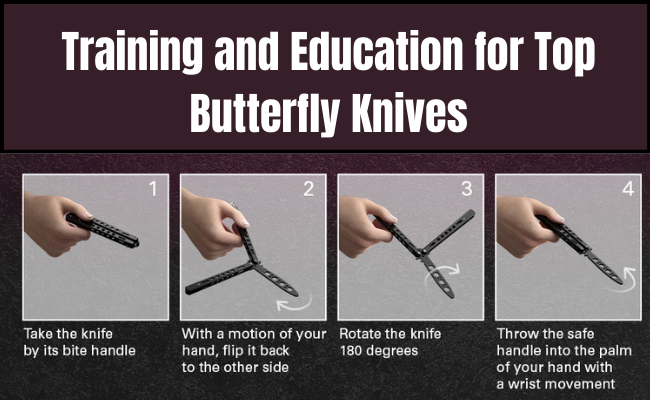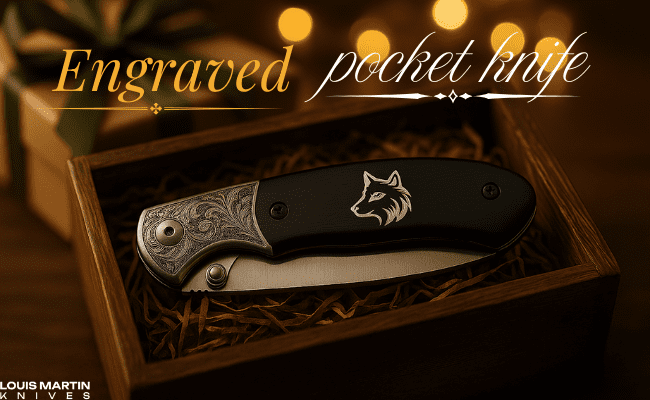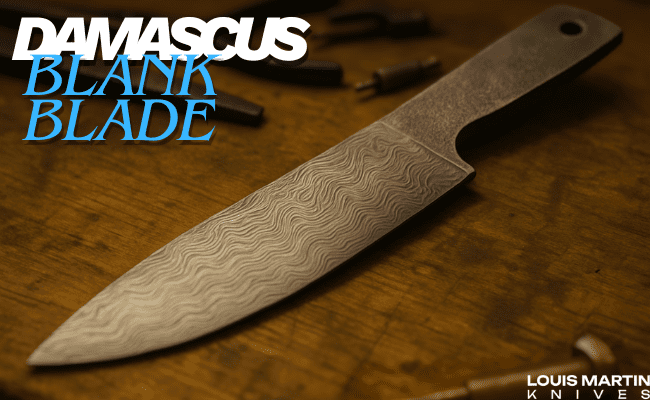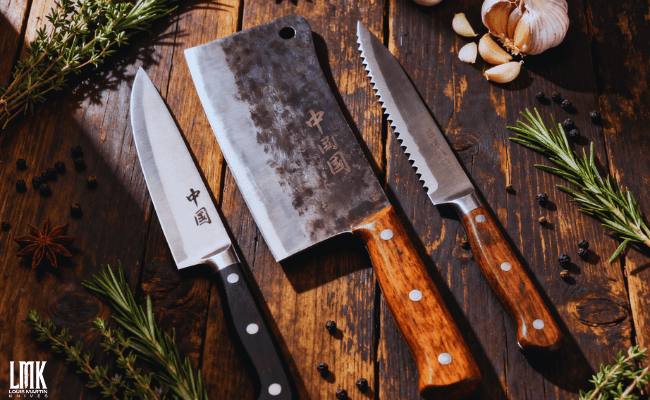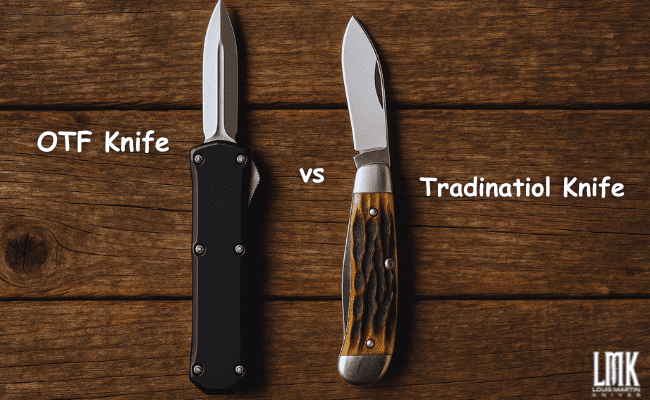Butterfly knives, also known as balisongs, are folding knives characterized by two counter-rotating handles that conceal a sharp blade within. This unique design allows for swift and intricate flipping movements, making them both a practical tool and a form of artistic expression. The allure of butterfly knives lies in their versatility, but this also demands a heightened sense of responsibility from users.
Handmade knives showcase exceptional craftsmanship, reflecting artisanal skill and precision. Crafted with care, these knives offer a unique blend of quality, durability, and aesthetic appeal for discerning enthusiasts.
Growing Popularity and Usage
In recent years, the butterfly knife has gained popularity beyond their traditional use. Originally designed for self-defense and combat, they are now sought after for their aesthetic appeal and as collectibles. The surge in popularity is evident in the growing community of enthusiasts, who engage in various activities such as flipping, tricks, and competitions. With this increased interest, the need for responsible handling becomes paramount.
Importance of Responsible Handling
As with any bladed tool, responsible handling of butterfly knife is crucial to ensure the safety of the user and those around them. This article explores the components and features of butterfly knives, delves into safety considerations, and provides guidelines for responsible handling techniques, maintenance, storage, and usage.
Understanding Best Butterfly Knives
Components and Features
To responsibly handle butterfly knife, it’s essential to understand their components. Typically, a butterfly knife consists of two handles, a tang, and a blade. The handles house the blade when closed, and the unique pivot system enables smooth flipping. Users should familiarize themselves with the anatomy of the knife to develop a better understanding of its mechanics and potential risks.
Legal Considerations and Regulations
Before acquiring a butterfly knife, users must be aware of the legal considerations and regulations in their region. Laws regarding butterfly knives vary, and some areas may classify them as illegal weapons. Responsible users adhere to local regulations, obtain necessary permits if required, and prioritize compliance to avoid legal consequences.
Differentiating Between Types of Butterfly Knives
Not all butterfly knives are the same. Responsible users should be able to differentiate between various types, including hunting knives, pocket knives, dagger knives, karambit knives, kukri knives, skinning knives, chef knives, and bowie knives. Each type serves specific purposes, and understanding these distinctions aids in using the right tool for the right task.
Importance of Safety Finest Butterfly Knives
Potential Risks and Dangers
While top butterfly knives offer versatility, their improper use poses inherent risks. The sharpness of the blade, combined with the flipping maneuvers, can lead to accidental cuts or injuries. Additionally, inexperienced users may struggle with control, increasing the risk of mishandling and accidents. Understanding these potential dangers is fundamental to promoting responsible use.
Common Accidents and Injuries
Responsible handling involves acknowledging common accidents and injuries associated with best butterfly knife. Accidental cuts, especially during tricks or flips, are prevalent. Additionally, users may experience injuries due to a lack of control during opening and closing maneuvers. By recognizing these risks, users can take proactive measures to mitigate them.
Legal Consequences of Irresponsible Handling
Irresponsible handling not only endangers the user but can also have legal repercussions. In some jurisdictions, using a top butterfly knife irresponsibly may result in criminal charges. To avoid legal consequences, responsible users prioritize safe handling practices and comply with local laws.
Responsible Handling Techniques – Top Butterfly knives
Proper Grip and Stance
The foundation of responsible handling lies in adopting a proper grip and stance. Users should hold the butterfly knife with a firm but not overly tight grip to maintain control. Stance is equally important, providing stability during flipping maneuvers. Responsible users invest time in mastering these basics to reduce the risk of accidents.
Safe Opening and Closing Procedures
The opening and closing of a butterfly knife require precision and control. Responsible handling involves practicing safe procedures to minimize the risk of self-inflicted injuries. Users should focus on deliberate movements, gradually advancing to more complex maneuvers as they gain proficiency.
Controlled and Deliberate Movements
Responsible users prioritize controlled and deliberate movements to ensure the safety of themselves and those nearby. Avoiding unnecessary speed or flashy but risky maneuvers contributes to a safer handling experience. Consistent practice, coupled with mindfulness, enhances the user’s ability to execute movements with precision.
Best Butterfly Knives – Maintenance and Inspection
Regular Blade Maintenance
To ensure the butterfly knife remains in optimal condition, regular blade maintenance is crucial. Responsible users clean the blade, lubricate the pivot points, and inspect for any signs of corrosion. Regular maintenance not only preserves the knife’s functionality but also prolongs its lifespan.
Checking for Loose Parts or Defects
Loose parts or defects in a butterfly knife can compromise its safety and effectiveness. Responsible users routinely check for any signs of wear, loose screws, or damaged components. Prompt identification and rectification of such issues contribute to a safer overall experience.
Ensuring the Knife is in Good Working Condition
Before using a butterfly knife, responsible users verify that it is in good working condition. This includes confirming that the locking mechanism functions correctly and that there are no abnormalities in the blade or handles. Maintaining a well-functioning knife is essential for safe and effective use.
Storage and Transportation for High Quality Butterfly knives
Secure Storage Options
Responsible handling extends beyond actual use to include secure storage when the knife is not in use. Users should invest in secure storage options such as dedicated sheaths or cases to prevent accidental access and protect the blade from damage. Proper storage contributes to both safety and the longevity of the knife.
Legal Requirements for Transportation
Transporting finest butterfly knives may be subject to specific legal requirements, depending on the jurisdiction. Responsible users familiarize themselves with these regulations to ensure compliance during transportation. This includes using appropriate containers and adhering to any licensing or permit requirements.
Minimizing Risks During Storage
Even when safely stored, butterfly knives can pose risks if not properly secured. Responsible users take precautions to minimize risks during storage, such as storing the knife in a location inaccessible to unauthorized individuals, especially children. These measures contribute to an overall safer environment.
Training and Education for Top Butterfly Knives
The Importance of Proper Training
Responsible handling of good butterfly knives begins with proper training. Enthusiasts should invest time in learning the basics and gradually progress to more advanced techniques. Formal training programs, online tutorials, or guidance from experienced users can provide valuable insights and foster responsible knife handling skills.
Seeking Professional Guidance
For those new to good butterfly knives, seeking professional guidance is a responsible step. Professionals can offer personalized advice, correct improper techniques, and provide valuable insights into safe handling practices. Learning from experienced individuals enhances one’s skill set while prioritizing safety.
Continuous Learning and Skill Improvement
Responsibility extends to a commitment to continuous learning and skill improvement. Responsible users stay informed about the latest safety practices, participate in workshops or training sessions, and consistently refine their techniques. This proactive approach ensures ongoing competence and minimizes the risk of accidents.
Responsible Use – Best Butterfly Knife
Appropriate Situations for Butterfly Knife Use
Responsible use involves employing best butterfly knives in appropriate situations. While these knives have various applications, such as self-defense or utility tasks, users should assess the suitability of the tool for a given scenario. Choosing the right best knife for the right task contributes to both safety and efficiency.
Avoiding Risky Behavior and Environments
Responsible users exercise discretion in choosing when and where to use top butterfly knives. Avoiding risky behavior, such as performing advanced tricks in crowded spaces, reduces the likelihood of accidents. Adapting the use of the knife to the environment demonstrates a commitment to responsible handling.
Respecting Others’ Safety and Comfort
Responsible handling extends to considering the safety and comfort of others. Users should be mindful of their surroundings, ensuring that bystanders are not at risk during knife manipulation. Additionally, respecting others’ comfort levels with best butterfly knives fosters a positive and responsible community culture.
Community Awareness
Promoting Responsible Handling in the Community
Responsibility goes beyond individual actions to community awareness. Enthusiasts should actively promote responsible handling within the butterfly knife community. This can involve sharing safety tips, organizing awareness campaigns, or creating platforms for discussions on safe practices.
Organizing Workshops or Awareness Programs
To enhance community awareness, responsible users can organize workshops or awareness programs. These events provide a platform for sharing knowledge, addressing common concerns, and promoting a culture of safety within the community. Open dialogue contributes to a collective commitment to responsible handling. Buy our high quality Damascus steel butterfly knives. Wholesale Knives Deals
Fostering a Culture of Safety
Ultimately, responsible handling of top butterfly knives is about fostering a culture of safety within the community. Emphasizing the importance of responsible practices, encouraging mentorship, and actively participating in initiatives that promote safety contribute to a positive and responsible community ethos.
Conclusion
- Responsible handling of top butterfly knives involves a comprehensive understanding of the tools, adherence to safety protocols, and a commitment to continuous improvement. Users must prioritize responsible handling techniques, maintenance, storage, and usage to mitigate risks and ensure a positive experience.
- Encouraging responsible handling is not just an individual responsibility but a collective effort within the community. By setting an example, sharing knowledge, and actively participating in initiatives that promote responsible handling, users contribute to the overall safety of the butterfly knife community.
- The overarching theme of responsible handling is the priority of safety in all aspects. Whether in training, maintenance, storage, or usage, safety should be the guiding principle. This commitment to safety not only preserves the well-being of the user but also fosters a positive and responsible culture within the butterfly knife community.
FAQs
What handle do you hold on a butterfly knife?
You typically hold the bite handle of a butterfly knife. The safe handle, also known as the latch handle, remains stationary during manipulation.
Is it legal to carry around a butterfly knife?
The legality of carrying a butterfly knife varies by jurisdiction. It is crucial to research and adhere to local laws regarding the possession and carrying of such knives.
Is it safe to play with a butterfly knife?
Safety depends on responsible handling. While top butterfly knives are designed for specific purposes, playing with them should involve proper training, awareness of potential risks, and adherence to safety guidelines.
Where is the safe handle on a butterfly knife?
The safe handle, also known as the latch handle, is the handle you do not manipulate during flipping. It remains stationary, helping to avoid accidental cuts or injuries during use.

